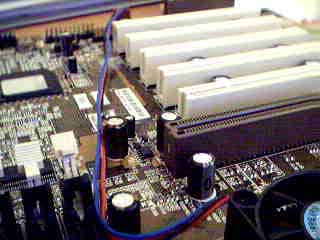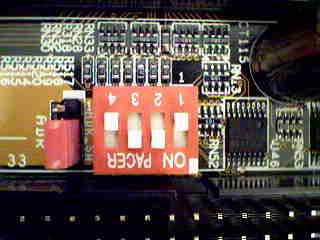VIA KT133A Motherboard Roundup - June 2001
by Mike Andrawes on June 13, 2001 2:52 PM EST- Posted in
- Motherboards
FIC AZ11EA
|
FIC AZ11EA |
|
|
CPU
Interface
|
Socket-A
|
|
Chipset
|
VIA KT133A |
|
Form
Factor
|
ATX
|
|
Bus
Speeds
|
90 / 95 / 100 / 101 / 102 / 103 / 105 / 107 / 109 / 110 / 111 / 113 / 115 / 117 / 120 / 125 / 130 / 133 / 135 / 137 / 139 / 140 / 143 / 145 / 148 / 150 / 155 / 166 MHz |
|
Core
Voltages Supported
|
1.500 - 1.850 V (in 0.025V increments) |
|
Memory
Slots
|
3
168-pin DIMM slots
|
|
Expansion
Slots
|
1
AGP Slot |
|
On-board
Audio
|
Audio
Sigmatel STAC9708T AC'97 CODEC
|
|
BIOS
|
AMI Simple BIOS Setup 1.24b |
The FIC AZ11EA very closely resembles their second KT133 solution, the AZ11E, which was a very decent motherboard. The same design is carried over to the AZ11EA, which also delivers decent performance and quality.
Probably the most annoying thing about the board is the long power cable for the HSF unit sitting on the 8363A North Bridge. Since the AZ11EA is based on the AZ11E, which has only two fan headers, FIC was forced to use the fan header sitting on the left side of the board for the HSF unit on the 8363A North Bridge for cooling. Together with the necessary fan header for the HSF unit on the CPU, that leaves no additional headers for more fans to be attached to the board directly.

The long wire of the HSF unit on the 8363A North Bridge
The layout of the board is good for the most part, except for the power connector that is placed too close to some capacitors. This makes removing the power cable a bit difficult. Additionally, some MOSFETs and capacitors are quite close to the CPU socket as well, possibly preventing the use of larger HSF units.
The performance of the board was pretty average, except in Quake III, where
it came in last.
Multiplier ratio and CPU core voltage settings can be adjusted by two sets of
dipswitches, which is not as friendly as some other KT133A boards we have here.
Meanwhile, I/O voltage tweaking is not available, which could affect overclocking
results negatively.

Multiplier ratios and CPU core voltages are adjusted using dipswitches
FSB speeds are not available in 1MHz increments either, although FIC did a good job of providing a variety of values so the gaps in between settings for speeds higher than 133MHz are not too big. Overclocking of the board was not too impressive, possibly due to the lack of I/O voltage tweaks. We were able to push the board to 145MHz before the board started to lose stability.
Overall, the AZ11EA is still a very good board, but it's just not the best for hardware enthusiasts. FIC failed to include some of the extra features that help with overclocking.











0 Comments
View All Comments